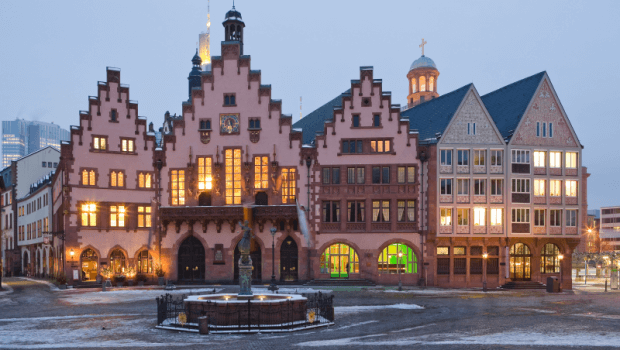
Hessen (Hesse or Hessia) is the versatile and federal state placed in the heart of Germany. The vibrant state is filled with valued culture, beautiful countryside, natural beauty, and is a peaceful holiday destination. The beautiful state capital and the largest city Frankfurt am Main are the beautiful cities attracting people from around the world. The state is the federal state of the Federal Republic of Germany.
The magnetic state has an active life where many people are bustling to enjoy the picturesque nature, castles, and chateaus which seem to be coming right out of a fairytale. Rich and authentic culture which is diverse, and a complete contradiction of medieval architecture and urban lifestyle which complement each other perfectly like the 21st-century conference centers with extraordinary historical surroundings. The state is the perfect example of contrast and diversity.
The name Hessen (as we call it in German) is called “Hesse” in English which initiates from Hessian dialects while the other name “Hessia” is from the Medieval Latin Hassia. The German name, though, is still being significant and used by the European Commission as the regional names are to remain unchanged according to the policy. The place is right for those who want a relaxing break from their lives with plenty of exploration and fascinating cultural diversity to experience.
Location:
Hessen is set amid the Upper Rhine Plateau in the west and the Thuringian Forest in the east part. It chiefly consists of rich wooded uplands. The state is in the central west of Germany which shares its borders with the other states like Lower Saxony, Bavaria, Thuringia, North Rhine-Westphalia, Rhineland-Palatinate and Baden-Württemberg. The Rhine-Main area has the cities Wiesbaden, Offenbach; Frankfurt am Main, Darmstadt, Hanau, Wetzlar, Gießen. There’s Kassel in the east, and the north has Marburg an der Lahn with it.
The Central Uplands of Hessen has the conical masses of volcanic Bogelsberg (Vogels Mountain), which tops the rank in having biggest continuous basalt area in the continent, wrapping approximately 2,640 kilometers (9500 square miles) of land. In the eastern Hessen, the Rhön is the mountainous mass soaring to the Wasser Peak, which is the highest mountain in the state of about 3,117 feet (950 meters) high. The Hessian territory keeps the Spessart Forest and the Odenwald with itself. The north part of the state has the Fulda river gushing north and also the tributary, the Eder.The Fulda River intertwines with the river Werra forming Weser nearby Münden. The western area of the state mostly consists of the tributaries of the rivers Main and Rhine. The highlands are covered with beeches and conifers, and the limestone uplands have cultivated lands. The state endeavors a great scenic diversity.
Weather:
The average temperature of the state which is located in the heart of the country has the moderate maritime climate. The summer months in the state are busy with numerous outdoor events and festivals taking place all over the state. With this sunny temperature, hiking, mountain climbing, camping, biking and other outdoor adventures is totally in the favor of the enthusiasts and also relaxing place for sunbathing and spas are enjoyed widely in this temperature. The summer temperatures are mostly at its peak in the month of July where the average temperature is 22 degrees Celsius (72 degrees Fahrenheit).
The winters are chilly, and the precipitation is in the sleet or snow form. The temperatures are slightly lower in the regions which are situated in the higher parts, making the best winter sports adventure around the country. The winter adventures and Christmas shopping are widely enjoyed here during the holiday season. The average temperature here is 10.6 degrees Celsius (51.1 degrees Fahrenheit). Therefore, the ideal time to visit this place is during the summers when the temperatures are all normal. Also, a lot of events and festivities are held during the summers, making it an ideal choice for the tourists that visit the place from diverse parts of the world.
History:
The English name “Hesse” is the name originating from the Hessian dialects. The Hessians are practically supposed to be the descendants of the Chatti-the Frankish tribe who had their homes in the northern part of the Main River. In the early 8th century, St. Boniface Christianized the Chatti. The territory of the Chatti was ruled by various dynasties of counts in the 10th century. In 1130, the Hessen area was joined to the Thuringia landgraviate. In the year 1247, the last landgrave of Thuringia-Henry Raspe took his last breath and the wife of Brabant’s Henry II and his niece –Sophia attained Hessen.
The territory was passed to her son Henry I(the child) who established the dynasty of Brabant in Hessen and later in the year 1292; he was raised to the rank of the Prince of the Holy Roman Empire. For the following two centuries, the Landgraves of Hessen grew and often clashed with the archbishop-electors of Mainz, who were adjacent. The place was two times partitioned in the 15th century but the Hessen’s greatest ruler-Philip the Magnanimous reconciled the territory. Lutheranism was made known by him in 1526 and the following year the first Protestant university in Europe was established, at Marburg. The territory was later distributed by Philip to his four sons named as Hesse-Kassel, Hesse-Rheinfels, Hesse-Marburg and Hesse-Darmstadt. Later in the 20th century, most of the territories and old Nassau part were brought up together forming the Greater Hessen (Gross Hessen) state, which was plainly named Hessen later.
Surroundings:
The surroundings of the ultra modern lifestyle of the baroque style state are quite amusing. There are mineral springs, elegant resorts, lovely oak and beech forests in the Darmstadt’s upland region which are quite famous among both locals and visitors. One can enjoy the secluded hiking on the beech-filled hills in the Kellerwald-Edersee National Park which is near Kassel in the north part of Hessen. The Wiesbaden area prides itself with 27 thermal springs and the legendary health resort.
There are best of the best universities in Frankfurt am Main, Giessen and Marburg in the state which supplements Darmstadt, Protestant and Roman Catholic theological colleges with a technical university. Beautiful ruins of castles, ancient churches, palaces and baroque style buildings, town halls, and burgher houses can be found around the state. The Lorsch village placed in the south of the state is the house of a Carolingian era Abbey which with its ‘Torhall” entrance was considered as a UNESCO World Heritage site in the year 1991.
Traveling the state:
The state has notably developed highway networks and the chain of federal and private bus services are provided to the people. The Rhine supports the main waterway and is of considerable economic importance. Europe’s second largest and busiest airport, Frankfurt airport is in this state. The railway travels are beautifully developed having the European international links with high-speed passenger service which focuses on Frankfurt am Main.
Thus, if you want to travel around the state or come to this state, the accommodations provided here are convenient, cheap and reliable. International visitors can arrive most probably at Frankfurt airport which is also a major German carrier Lufthansa hub. The central station of Frankfurt takes less than 15 minutes by subway if you want to explore the state by rail. The InterCity Express, which is both regular and fast speeds, leads you to your desired place in no-time and also connects to other international parts like Paris, Vienna, Brussels, Amsterdam, and Basel. If you want to go on wheels, there are various public options and private rentals are available throughout the state. If you want to explore the scenic nature and water life, there are various ferries and boats available too!
Why visit?
Hessen state is probably the first choice for the international travelers because of its contrasting features and diverse culture. The raw and unspoiled beauty of nature, the contradiction of ancient baroque style architecture with ultra modern lifestyle and surroundings, the diverse culture and the homely feel and vibrant atmosphere in the state makes it a unique and must visit place at least once in a lifetime. If you go deeper, you will find the renowned German personalities who either breathed here or came this way making it a nostalgic memory like Goethe in Frankfurt and Grimm Brothers in Marburg and Kassel. The history of the state is a complicated part with many famous personalities leaving their mark here, but that is what assists to explain the rich and diverse attractions of Hessen. Frankfurt-the modern town offers many museums with history buried in them and also expressive reminders of Jewish past. Also, other big city buzzes in the state offer many fantastic and historical sites which are just jaw-dropping. You can visit the place with your family and friends and enjoy exploring this really amazing place.
Major attractions:
There are numerous attractions in the state which are excellent and simply fantastic to visit. Frankfurt, which is the financial capital, offers various places like Staedel Museum, Frankfurter Romer, Palmengarten, the Naturmuseum Senckenberg (in English: Senckenberg Natural History Museum) and much more. If you visit the south, there is Darmstadt, which cannot be missed if you are a Jugendstil fan, and there are also UNESCO World Heritage sites here which are the must visit places – Lorsch monastery and Messel fossil site.
Wiesbaden and Bad Homburg are the oldest spa towns with hot springs and are the perfect relaxing places for those who want to take a break from urban stress. Taunus and Rhön in the east are the places where one can enjoy the beautiful and enchanting forest landscape. The cathedral towns looking like they are straight away from picture book are Limburg an der Lahn, Wetzlar, and Fritzlar to the university town of Marburg. Kassel in the north doesn’t fail to surprise us with its impressive Baroque gardens and outstanding museums. If you’re an avid history lover, you can’t afford to miss out on visiting these outstanding museums that host an array of historical pieces.
What else to see?
- Limes – UNESCO World Heritage.
- Hessenpark, which is an open air museum which displays half-timbered buildings from Hesse land.
- Oberes Mitterlrheintal in the Middle Rhine Valley, a UNESCO World Heritage.
- Saalburg- a Roman fort and Museum.
- Goethe House- Birthplace of Goethe and also an exhibition room.
- Alte Oper-Frankfurt Grand Concert Hall of the 19th
- Hercules Monument: famous for the monument, hiking, waterfall and architecture.
